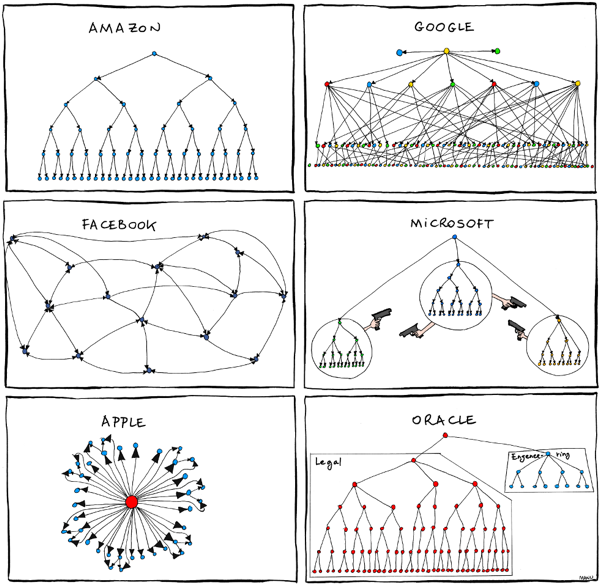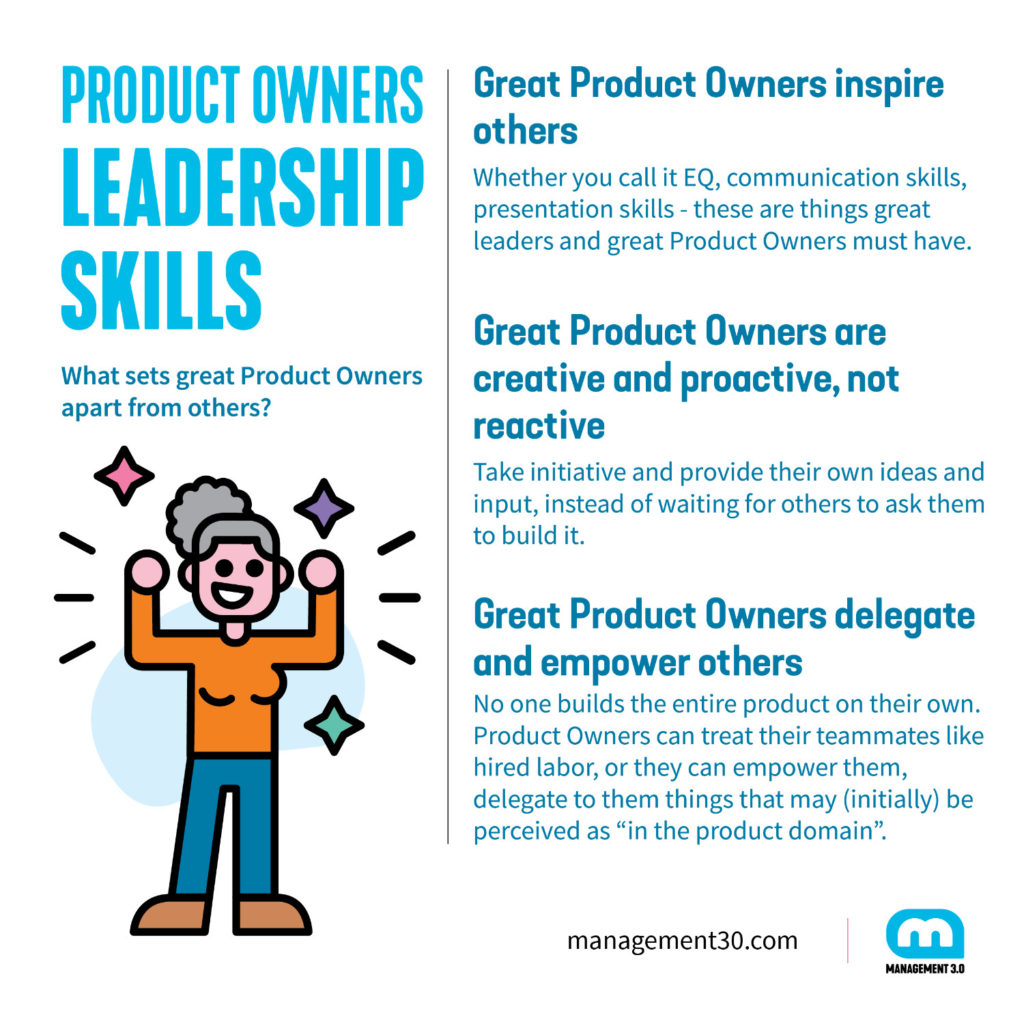Is “Product Owner” a Leadership Position? Areas of improvement for Product Owner
Alex Reizer is a Management 3.0 Facilitator and Agile Product Leader from Israel with more than 8 years of experience in product creation. He found that empowered and motivated people create the most successful products. As Head of Product for two organizations, he has facilitated agile processes, the Scrum framework and Management 3.0 practices. In this article he is shedding light on leadership skills for Product Owners
Quick Links:
- Why Product Owners Need Leadership Skills
- Creating True Ownership
- Leadership Tools for Product Owners
- Leadership Advice for Product Owner
Why Leadership Matters
An entrepreneur comes up with an idea, and tries to get funding for it. They prepare the best “deck” or “stack” of slides, and armed with business knowledge, data, sales skills, storytelling and more, they try to convince venture capitalists that their ideas are worth the investors’ money. If they succeed, they may just create something of value to the world and to their nascent company. If they fail, they don’t.
When they get funding, they’ll build, measure and learn, and decide whether to persevere or to pivot. Their leadership will be responsible for the success, or failure, of the company, perhaps with partners, but that’s a very small group of people, who are already onboard. We’ve all heard of these pivotal founders and the organization structures they create, to shape companies in their image, e.g. Steve Jobs. This funny illustration below shows just how much the leadership, and the character of the leader/s of a company, affects its structure (notice Apple under the late Steve Jobs, for example).

Why Do Product Owners Need Leadership Skills?
We’ve talked about founders, entrepreneurs – independent risk takers. But what about Product Owners that are hired employees and are individual contributors?
Why do Product Owners need great leadership skills?
Here is why:
Despite the title of owner or manager, Product Owners are often not empowered to own or manage anything other than themselves. Product Managers or Owners are not managing people, they manage or own the product. They need other ways to motivate and inspire people, over whom they have no formal authority, to help them see their vision through.
It’s often this lack of formal authority that creates the necessity for amazing leadership skills. If you cannot convince others to follow your ideas, to collaborate with you on building them, measuring them, and launching them to the customers, you may be stuck. You won’t be able to just sit and wait for someone to enable or empower you.
Even when there are product teams assigned to your product/domain (as it should be), you’re still not managing/leading them as a team, only their work, and rely on their partnership to create truly incredible products, instead of just barely functional, or “good enough”. In a hyper-competitive environment, “good enough” isn’t good enough to win over customers from competitors, or avoid churn to more agile competitors.
Think of yourself as the entrepreneur in the earlier example. However, unlike the entrepreneur, you may be building things without asking for any special funding, or convincing anyone. Just not the things you want to build, or not the things the customers need to solve their problems. You may be building what you’re asked, serving as a proxy Product Owner, a middleman, a scribe for tasks of others, etc.

So, how do you leverage leadership skills to improve your situation as a Product Owner?
How Leadership Skills Help Product Owners Create True Ownership: Product Owner Key Roles and Responsibilities
Great Product Owners inspires others
Think of great leaders you’re familiar with – they’re larger than life figures, and when they speak, they capture the attention of the room. Product Owners must be inspiring. Whether you call it EQ, communication skills, presentation skills – those are things great leaders and great Product Owners must have.
When you’re developing your product vision, you must inspire people, even if you’re not managing them.
Great Product Owners are creative and proactive, not reactive
Product Owners that want to move on from proxy to entrepreneur, must take initiative and provide their own ideas and input, instead of waiting for others to ask them to build it. It’s a cycle – by displaying great initiative, you’re perceived as a leader, not a follower, and thus you may eventually become a true leader with formal authority (granted by others, naturally), e.g. Head of Product, or Product Group Manager, etc. (if that is your aspiration).
Even if you continue on the individual contributor path, those skills are invaluable to allow you to develop innovative products (not just copying others’ products).
Great Product Owners delegate and empower others
No one builds the entire product on their own. Product Owners can treat their teammates like hired labor (and expect results that are at best mediocre), or they can empower them, delegate to them things that may (initially) be perceived as “in the product domain”. By doing that, they empower them, and allow themselves to move on to “higher level” work, moving from the Proxy/Scribe Product Owner stance, to move, ever closer, to becoming a true entrepreneur. It’s a win-win.
You can realize this by using the Delegation Poker practice. Moving product practices from yourself to your teammates (those who are willing), or sharing them with your teammates. That is already being done at a lot of organizations, just not explicitly, and this awareness/explicit board creates a true sense of empowerment.

Also read: Servant Leadership | Agile Leadership
Leadership Tools for effective Product Owners: Areas of improvement for Product Owner
Alignment of Constraints
Management 3.0 and the initial book written by Jurgen Appelo provides a good baseline to becoming a better leader.
In the theoretical part of How to Align Constraints, within Leading and Ruling on Purpose, we see some great examples of how to handle leadership in complex organizations, and the futility of trying to rely on a top-down, heavy-handed approach to leading people, i.e. even if a Product Manager were a formal authority figure for the product team (developers, QA, design, etc.), it would be a far better option to lead by aligning constraints and letting people figure out the best way to reach the desired outcome (not output, but that’s a whole other discussion).
The reason is that complex systems are also adaptive, and if that sounds very unclear and scientific, in simple words we can say that: “a group of human beings working together behaves in unpredictable ways, and react to each other, thus we need an approach that doesn’t try to force an impossible behavior, but instead relies on this creativity to find solutions to problems (using a force to help us, not trying to resist it, think of judo). Each team/company may resolve the same problem in a different way, and may reach different, or similar solutions, and in that lies the beauty of human interaction and creativity, and the possibility that we create something new and valuable, instead of simply repeating the same old pattern that another team/company had”.
Your job is to make sure that the people can create their own rules together. And it’s their collaborative effort that allows the system to find its own way to the edge of chaos.
Jurgen Appelo, in Management 3.0: Leading Agile Developers, Developing Agile Leaders
According to a research by Godin, 2008: “A crowd becomes a tribe when it has a leader, and that the people are following the leader out of their own free will. This is also called emergent leadership”
This type of leadership is available to ANYONE, not through authority, but through attraction (to a purpose, to ideas, to a character) – realizing an intrinsic purpose our teammates may have (think of Moving Motivators “purpose”) alongside an extrinsic purpose (tasks/goals they’re given)
Also read: Collaborative Leadership
An effective Product Owner aligns constraints around product goals, and then involves the teammates in reaching those goals, alongside the agreed upon constraints, instead of feeding them well-specified, but ultimately meaningless and disempowering on their own, tasks.
Leadership Skills for Product Owners: What are some examples of constraint alignment?
For example, if you’re building a new feature, a Product Owner should involve the team (or its representative/s) from the idea stage. It’s called “Product Discovery” and Marty Cagan discusses it at length in his book, “Inspired”.
An idea Jurgen brings up in the book is “Next year, we are going to win the Best Product award for our industry” or “By the end of next year, the public will recognize that we have beaten the iPhone”, and while we should make sure our goals are realistic within our company’s/industry’s context, these types of aspirations, in term of product vision, create a leadership perception. Compare this to “Our features should be launched on time, as planned” and think which is more inspiring.
Finally, you could set a lot of KPI/metric related constraints for anything you aim to build, which will connect the teams to the business purposes, and ensure they don’t just think of the technical aspect on its own, but how it would affect business metrics (e.g. a slower application would reduce conversion, not just be a technical challenge, but a business one).

Empowerment of Teams
Product Owners are well positioned to manage the system, not the people, one of the main tenets of Management 3.0. The “Like a Gardener” metaphor refers to enriching the soil, planting seeds, watering according to the latest theory, and holding your breath. “You just might get a crop. You might not. If it all comes up roses, you’ll feel fine, but next year you’ll be sweating it out again”.
As a Product Owner, that pretty much sums up my work already, in terms of building products – we already test ideas, not having success guaranteed.
Why not extend this to our leadership?
We try things, sometimes we succeed, sometimes we don’t, but we’re not pre-loaded with the burden of “why aren’t people behaving as I instruct them to behave?”. You must convince and inspire, not instruct.
And surprisingly, giving power to people, which is in your control, increases your status as a product leader, instead of diminishing your status. It’s not a zero sum game. By having empowered people working with you, your status in the organization will improve, because the outcomes will improve, having motivated and empowered people working on it. Your status as a leader depends on support of others, and their support is gained via empowerment.
What can I do to become a better leader as a Product Owner?
Well, you could pay special attention to the “Management and Leadership” module of a Management 3.0 Foundation Workshop – the perfect start for your Product Owner Leadership Training.
Another thing you can do is to read Management 3.0, it’s written very well, and I quite liked reading it on its own (before or after the workshop), and I keep referring to it, year after year, to provide context to my mentees, or teammates.
Finally, a lot of the “soft skills” that we’re not spending time on honing, directly translate to being better leaders. If you have had any workshops, or books that you wanted to read, but not sure how they’d contribute to your work as a non-formal leader, I hope I’ve convinced you that the best Product Owners are also great emergent leaders.
Header photo by airfocus via Unsplash


